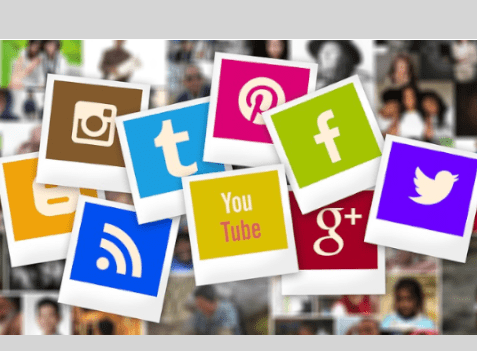With TikTok announcing new features for teens and families, including a 60-minute daily screen time limit, we look at the issue of social media addiction and ideas for tackling it.

TikTok Time Limit
(Short) video sharing app TikTok has just announced that every account belonging to a user below age 18 will automatically be set to a 60-minute daily screen time limit. TikTok says that if the 60-minute limit is reached, teens will be asked to enter a passcode to continue watching, requiring them to make an active decision to extend that time. Also, for children under 13, under the new changes, the TikTok daily screen time limit will be set to 60 minutes, and a parent or guardian will need to set or enter an existing passcode to enable 30 minutes of additional watch time.
Consulted Research
TikTok says that it consulted the current academic research and experts from the Digital Wellness Lab at Boston Children’s Hospital in choosing this limit and cites research from internationalmatters.org and TikTok that focuses on how the “mindful use of digital technology can benefit our wellbeing.”
The Problem(s)
TikTok has carefully worded its announcement to avoid focusing too much on the problem of the negative effects on young people of too much screen time, saying there’s “no collectively-endorsed position on the ‘right’ amount of screen time or even the impact of screen time more broadly.” However, others would argue, while there’s research to suggest that too much screen time can be harmful for teens and younger children. For example, other research has shown that too much screen time can result in:
– Physical health problems. Spending long hours sitting in front of screens can lead to a sedentary lifestyle, which can increase the risk of obesity, cardiovascular disease, and other physical health problems.
– Disrupted sleep. Disrupting the circadian rhythm can make it difficult to fall asleep and get restful sleep, which can affect overall health and wellbeing.
– Eye strain, dry eyes, and other vision problems.
– Poor posture, neck and back pain, and musculoskeletal problems.
– Mental health issues such as increased anxiety, depression, and other issues, especially among teenagers and young adults.
– Interference with face-to-face social interactions and the reduction of the development of social skills.
– Poor academic performance. Spending too much time on screens can lead to poor academic performance, as it can interfere with homework completion and studying.
Can People Be ‘Addicted’ To Social Media?
Spending a lot of time using social media isn’t the same as suffering from addiction. In the US, for example, internet gaming disorder and social media addiction are currently not recognised as official mental disorders, but research suggests that excessive use of social media can have addictive properties and can lead to negative consequences.
Social Media Activates Reward Centres and ‘FOMO’
Several studies have found that part of the big attraction of social media usage is that it can activate the reward centres in the brain, leading to feelings of pleasure and reinforcement, which can create a kind of craving for more social media use. For example, studies published in the journal Psychological Science in 2016, and the journal Addictive Behaviours in 2017 made links between social media use and the activation of the brain’s reward centre as well as symptoms of addiction, including withdrawal, craving, and tolerance.
Additionally, social media platforms are designed to be highly engaging and can trigger a fear of missing out (FOMO) among users, leading to compulsive use.
This, coupled with studies that have made a link between excessive social media use and negative mental health outcomes have fuelled the idea that there are elements in social media use that appear related to addiction.
Are We All Addicted To Social Media?
While social media use is becoming increasingly common and many people use it regularly, technically, not all individuals experience addictive behaviours or negative consequences as a result of their social media use.
The extent to which social media use can become addictive or harmful may depend on a variety of factors, including individual differences in personality, social context, and patterns of use. Some people may be more prone to addictive behaviours or may use social media in a way that interferes with other aspects of their life, while others may use social media in a more balanced and healthy way.
Let’s Not Forget The Positive Role That Social Media Plays
Worries about the harm that excessive use of social media and becoming addicted can overshadow the fact that social media can play several positive roles in the lives of young people and meet a variety of needs, including:
– Social connection. Social media provides a way for young people to connect with others, including friends and family members, and can help them feel more connected to their peers.
– Communication. Social media platforms provide a convenient and efficient way for young people to communicate with others, regardless of their location or time zone.
– Information sharing. Social media can be a valuable source of information and news for young people, allowing them to stay informed about current events and topics of interest. In fact, most young people get most of their news from social media rather than traditional older sources such as the TV, newspapers, or even news websites.
– Entertainment. Social media platforms offer a wide range of entertainment options, including videos, music, and games, which can provide a fun and engaging way for young people to pass the time.
– Creative expression. Social media can provide an outlet for creative expression, allowing young people to share their artwork, writing, music, and other creative endeavours with a wider audience.
– Professional networking. Social media can be a useful tool for young people who are just starting out in their careers, allowing them to network with others in their field and potentially find job opportunities.
A Guide
Given that although media can fulfil many needs in a positive way, but excessive use can be bad for us, here’s a short guide for ‘weaning ourselves off social media ’ and avoiding the negative issues of excessive social media use:
– Set goals. Start by setting clear goals for how much time you want to spend on social media each day or each week. This can help you stay focused and motivated to reduce your use.
– Track your use. Keep track of how much time you spend on social media each day or each week. This can help you identify patterns of use and areas where you may need to cut back.
– Establish boundaries. Set clear boundaries around when and where you will use social media. For example, you may decide not to use social media during mealtimes, or to avoid using it in the bedroom.
– Try replacing social media with other activities. Identify other activities you enjoy that can replace your social media use. This could include reading, exercise, spending time with friends, or pursuing a hobby.
– Unfollow or mute negative content. Unfollow or mute accounts or pages that make you feel anxious, stressed, or unhappy. This can help reduce your exposure to negative content on social media.
– Take breaks. Schedule regular breaks from social media, such as taking a day or a weekend off from using it. This can help you reset and refocus your attention on other activities.
– Seek support. If you are struggling to reduce your social media use, consider seeking support from friends, family, or a mental health professional. They can help provide encouragement, accountability, and strategies for reducing your use.
– Remember to be patient with yourself and to celebrate your progress along the way.
What Does This Mean For Your Business?
It seems clear that excessive use of social media (particularly among more vulnerable groups or those more prone to addictive behaviours) can contribute to many different problems. It’s important, therefore, to be mindful of social media use and to establish healthy boundaries and habits around its use, such as setting limits on screen time, taking regular breaks, and engaging in other healthy activities. TikTok’s latest move reflects this but there is also likely to be an element of good PR and a chance to get some good headlines at a time when the TikTok app is being banned from government devices in many countries over security concerns and current poor political relations between China and the West.
Although there are many issues related to how social media can affect users, social media platforms are big businesses supported by advertisers and, as such, need us to keep using (and be engaged with) their platforms. Also, social media has become an increasingly important platform for businesses to reach their target audience and promote their products or services. If people were to spend less time on social media, this could lead to a decrease in the number of people that businesses are able to reach with their marketing campaigns, which could ultimately impact their revenue and profitability.
However, it is important to note that social media is just one of many marketing channels available to businesses, and there are other ways to reach customers and promote products or services, e.g. email marketing, search engine optimisation or traditional advertising methods like print or radio ads. Additionally, if people were to spend less time on social media, this could also lead to a shift in the way that businesses approach their marketing strategies. For example, they may need to focus more on building relationships with customers through other channels.
Overall, while a decrease in social media use could have an impact on businesses that rely on this platform for marketing and advertising, many businesses already recognise the need for using a multi-channel / omni-channel approach to reach their target audiences.
By Mike Knight
